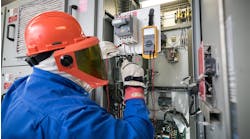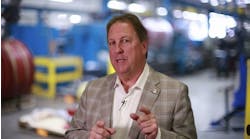Even small emissivity errors can result in huge errors in infrared readings. Unfortunately, electrical cabinets contain lots of shiny metal and therefore lots of surfaces that create emissivity problems.
These surfaces introduce measurement errors by reflecting ambient energy. Typically, the emissivity varies wildly because of various finishes and other factors, so you are not going to have a known adjustment value.
One of the ways to overcome this is to cover all of the low-emissivity surfaces with a high-emissivity material. This is best done during cabinet installation and wiring, but typically nobody thinks about it at that time.
The next best time is during a scheduled shutdown, so the system is thermography-ready when it’s up and running.
Two commonly used materials are black tape (e.g., the common 600V “electrical tape”) and high-temperature grill paint. The goal is to standardize emissivity to reduce reflection issues, so use the same treatment throughout rather than a mix of methods.
Consider high-emissivity labels. This is a really good way to go, because their specific emissivity is known; that means the thermographer has a known reference and thus can adjust the camera accordingly for accurate work on other surfaces.




